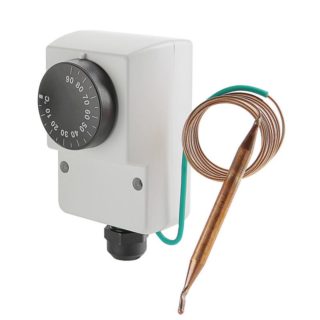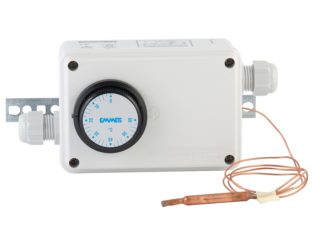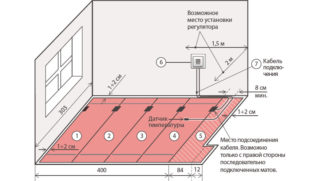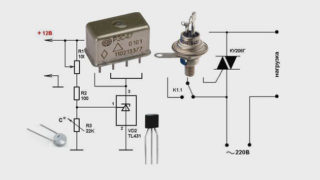To heat the premises, various devices are used with the ability to automatically control their main operating parameters. To implement such a function, a temperature-controlled thermal relay is used.
General description of the device
A temperature switch or thermostat is the main part that controls the operation of domestic heating appliances. It is also part of the design of water heaters and fans, climate control equipment.
A thermal relay (thermostat) is a control unit for a heating or cooling system that performs specific tasks:
- Saving resources. A boiler or other similar equipment with a temperature controller consumes less electricity or gas. The relay turns off the device as soon as the room temperature reaches the desired value.
- Increase comfort. If there is a relay for temperature control, it is not necessary to monitor the operation of the boiler.
- Security. An on / off thermal relay notifies the user of equipment overheating.
The main task of the thermostat is called monitoring the temperature parameters of the coolant. The user independently sets the required characteristics, after which the device maintains them at the optimum level.
Operating principle
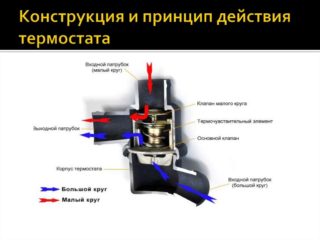 The temperature switch operates according to a rather simple circuit. Boilers equipped with this structural element are also equipped with a temperature sensor. It collects information regarding the temperature of the coolant circulating in the system. At the same time, room sensors record climatic indicators in the room itself. The collected information goes to the control unit.
The temperature switch operates according to a rather simple circuit. Boilers equipped with this structural element are also equipped with a temperature sensor. It collects information regarding the temperature of the coolant circulating in the system. At the same time, room sensors record climatic indicators in the room itself. The collected information goes to the control unit.
The principle of operation of the simplest thermal relay is that the controller built into the device checks the received data with the settings specified by the user. Subsequently, it increases the power of the device or, conversely, reduces it.
Types of devices
There are thermal relays on the market with different appearance, design features and characteristics. Depending on the installation method, such devices are stationary and socket (portable). The first type of thermal relay is installed directly into the wall. Portable options have the ability to quickly connect, which attracts many users.
At the location of the sensors emit:
- thermal relay with a remote temperature sensor;
- units with integrated sensor.
In the first case, the sensor is placed on the end of the cable extending from the temperature relay. Its length can be different - from 10-20 cm to several meters.
When there is a remote type sensor in the thermal relay circuit, you can count on more precise adjustment of the climatic parameters of the room.
An advantage of the device is the fact that their sensitive elements are allowed to be installed on the street, in the cellar and in various utility rooms. During the operation of such controllers, errors are practically excluded. The only drawback of a relay with a remote sensor is the appearance of failures when electricity disappears.
Mechanical options
Such temperature sensors and relays are considered the most affordable and easy to use. They work due to the presence of a bimetallic plate in the design. Disabling and adjusting the operating parameters of the device is carried out using a lever and a swivel wheel.
The lack of mechanical models is called the complexity of their installation. They are installed in a recess in the wall and are directly connected to the network.
Electronic models
Electronic thermal relays and sensors are also popular. They more accurately measure the climatic parameters of the room due to the presence of semiconductor components operating on a 24 V current. Such devices can be connected directly to the mains or batteries are used.
The electronic thermal relay is equipped with a monitor. This facilitates the setup of the device, notifies the user about the results of the last measurement of climatic parameters.
Adjustable temperature relays also additionally have a calendar, a clock, there is an opportunity to program them (operating modes day-night, weekdays-weekends).
Application area
A 12 volt thermal relay is often part of the design of heating systems. The user needs to control the temperature in the boiler and the circuits, taking into account the climatic indicators of the room. The device also allows you to adjust the volume of water in the system. In the presence of a temperature relay, it is possible to timely detect any malfunctions in the operation of the boiler.
The design of domestic heaters may also include thermostats that are connected through a wall outlet. Such devices are easy to use and connect, versatile and highly efficient. Such thermal relays are compatible with electric kettles, heaters, lighting equipment.
Thermal relay for underfloor heating
There are special controllers designed to regulate the operation of the "warm floor" system. They are connected to several parts - sensors, heating elements and mains. After switching on, the thermal relay receives information about the temperature indicators of the system, after which it compares them with the settings set by the user.
If necessary, the controller turns on or off the heating elements, doing this cyclically. Therefore, a warm floor without difficulties provides a stable air temperature in the room.
For infrared heaters
 Devices are widely used because of the ability to transfer thermal energy to large areas. When installing the thermostat, it will be possible to increase the efficiency of such devices. Using a programmable patch thermostat, it is easy to configure the operation of the infrared heater for a long period of time.
Devices are widely used because of the ability to transfer thermal energy to large areas. When installing the thermostat, it will be possible to increase the efficiency of such devices. Using a programmable patch thermostat, it is easy to configure the operation of the infrared heater for a long period of time.
Controllers help the user save energy. The system can be configured in such a way that the device will turn on at a certain moment to maintain the air temperature in a given range.
For saunas and baths
It is recommended to use controllers capable of operating at temperatures from + 50 ° C. With their help, the functioning of the sauna or bath will occur independently, taking into account the parameters specified by the user.
Instructions for creating a device
To make a thermal relay with your own hands, you need to adhere to the following scheme:
- Preparatory work. All necessary elements are placed on the board and soldered. To do this, it is forbidden to use acid, which can lead to spoilage of small parts. Experts recommend the use of rosin.
- Etching tracks. Performing taking into account the circuitry of the device.
- Checking the performance of the controller. To perform this operation, a tester is used.
- Testing the performance of semiconductors. Measure the polarity of triodes, diodes, and other elements.
After completing the assembly of the temperature sensor, do it yourself to connect to the system. Thyristors are selected empirically, this will allow you to perform more fine-tuning the functioning of the device.
